The washer or its hoses might leak onto the floor. If it does, it may spread into other rooms on the same floor or even through the basement.
You might need to repair more than just your laundry room if you have leaks in it. To prevent issues in the laundry room, you can waterproof the floor.
Remove any water from the floor. Use a wet/dry vacuum cleaner to pick up excess water, then wash it down to remove soap residue if needed.
You want to be careful not to damage the pipes or electrical wiring beneath the floor. Wipe it dry with paper towels. Let it air dry before you waterproof the floor.
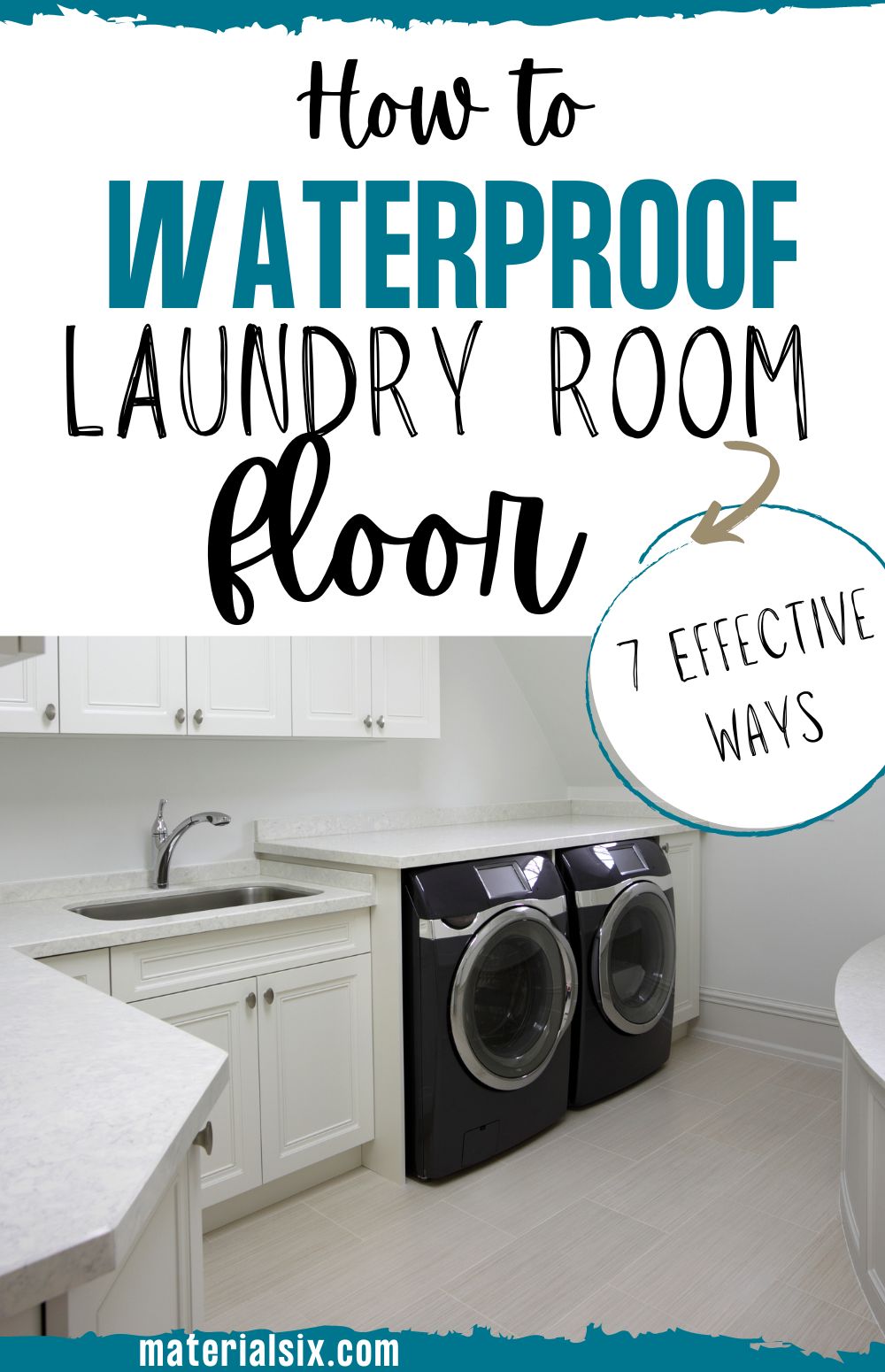
7 Ways To Waterproof Your Laundry Room Floor
1. The Waterproofing Membrane
A waterproofing membrane is designed to protect the subfloor under flooring; it is applied in buckets rather than sheets. The membrane can also be laid directly on the vinyl if the floor is being installed over an existing one like tile over vinyl. As with thin-set mortar, apply the membrane with a notched trowel so it is evenly distributed over the floor surface.
It will form a bond with the existing floor and prevent moisture from seeping through.
Apply two layers of the membrane to create a waterproof barrier. Cut in an “X” across each corner of the room, then cut down the center between them all to make it easier to get around the entire room. Use an expanding foam spray to fill in any spaces or cavities. Be sure to remove any paint from the area where the membrane will overlap at the wall.
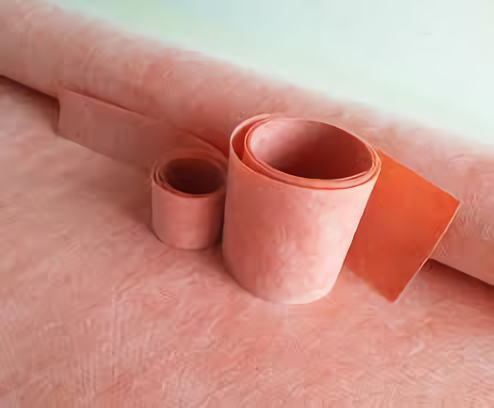
Cut the membrane around pipes, heat registers, and vents before you position it on top of them. Cut slits in it if needed for vinyl edging strips that will be laid over the flooring for it to wrap around, then overlap it on the floor’s seams.
Install the vinyl over the membrane using a notched trowel or putty knife to push it into place and press down on it evenly. This will prevent air pockets from forming beneath the vinyl, which can cause breakage in higher traffic areas like next to washers and dryers.
Watertight seals are created by pressing the membrane into cracks and flooring edges. You must allow the membrane to thoroughly dry before placing flooring on top. If you have hardwood floors in your laundry room, the membrane will protect your floors from leaks that could harm the wood. It will also prevent water from seeping through the membrane into your neighbor’s basement. Hardwood is not a good water-resistant material by itself.
An epoxy coating can provide waterproofing for unsealed concrete floors. Apply the epoxy over the membrane coving the entire floor surface. It is better than just painting or staining because it forms a chemical bond with concrete making moisture bounce off of it. The coating provides protection against water penetration and helps to prevent mold growth.
If you do not feel that the above steps are enough to waterproof your floor, you can also treat your subfloor with vapor barrier paint. This will create a seal over all of the surfaces in the room preventing water from getting to the unprotected parts.
2. Vinyl
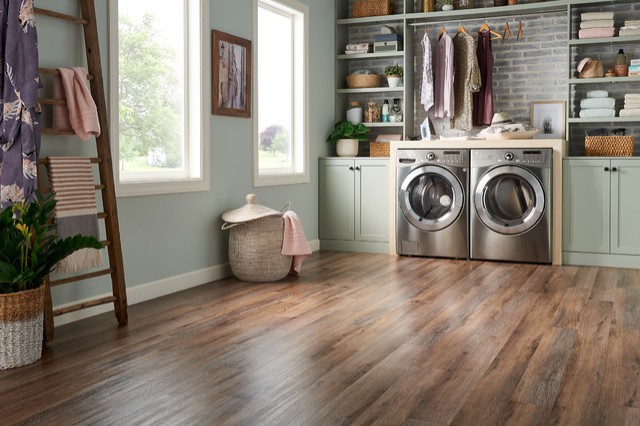
You can waterproof your floor for an affordable price with vinyl flooring. This flooring is available in a variety of colors and patterns, and will probably match the decor of any home.
Vinyl sheets offer greater water protection than vinyl tile; each tile’s edge must be sealed to create a waterproof surface. Add an extra 2 to 3 inches of vinyl along the wall edges, then hide them with a baseboard for extra waterproofing.
In case of damage to vinyl flooring, you can caulk the area or replace it to keep the floor waterproof.
3. Tile
It is more expensive to install ceramic tile, but its durability exceeds that of vinyl. Though the grout between the tiles is porous and will stain when wet, it cannot allow water to travel to the floor beneath it.
A waterproof sealer can help make grout waterproof. In order to maintain the seal, these must often be reapplied periodically. Be sure to caulk the outer edges of the tiles where they meet the wall.
Ceramic tile is the easiest to maintain, it’s also very beautiful and can be used for many different style rooms. It has a longer life expectancy than vinyl or other common materials making it great for high traffic areas like laundry rooms.
4. Linoleum
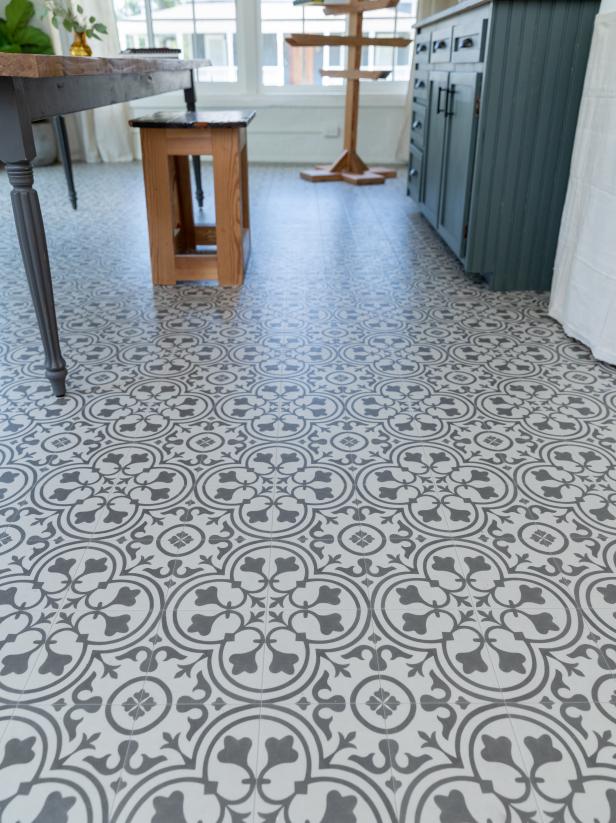
For an environmentally friendly flooring option that is waterproof, use linoleum. It is made from cork and linseed oil in a jute backing.
It is used most often for its durability and easy maintenance but has become popular in eco-friendly homes due to the fact that it is environmentally friendly.
5. Ceramic Tile
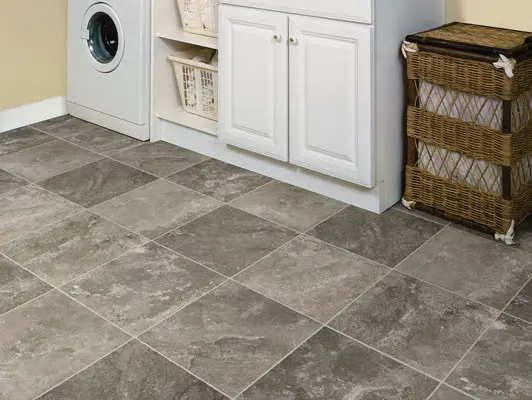
This flooring option can be used for both decorative and waterproof purposes. With the option to choose from a variety of styles, it can be used in any room. The tile itself has protection against moisture so you don’t have to worry about sealing the flooring initially, just be sure to caulk the grout’s edges.
Carpeting is usually not recommended for use in laundry rooms because spills are common in these rooms. However, you can use a rubber mat for safety and water protection. Another great option is to install carpet over tile or vinyl with a moisture barrier underneath.
6. Hardwood
If you have hardwood floors in your laundry room, the membrane will protect them from leaks that could harm the wood. It will also prevent water from seeping through the membrane into your neighbor’s basement.
Hardwood is not a good water-resistant material by itself; you can also treat it with vapor barrier paint to help protect against water penetration and mold growth on the subfloor, though this will increase the cost of installation.
7. Caulk
No matter what type of flooring you choose, caulk can come in handy.
If your flooring comes in contact with the baseboard, or with the wall, seal the edges with caulk.
If the water leaks into your laundry room, you can install PVC baseboard painted in a glossy white paint or stained to look like wood; this will help contain leaks.
Fill in holes for drains or seal around floor drains, if necessary. Water should not accumulate on your laundry room floor if you use silicone caulk or bathroom caulk.
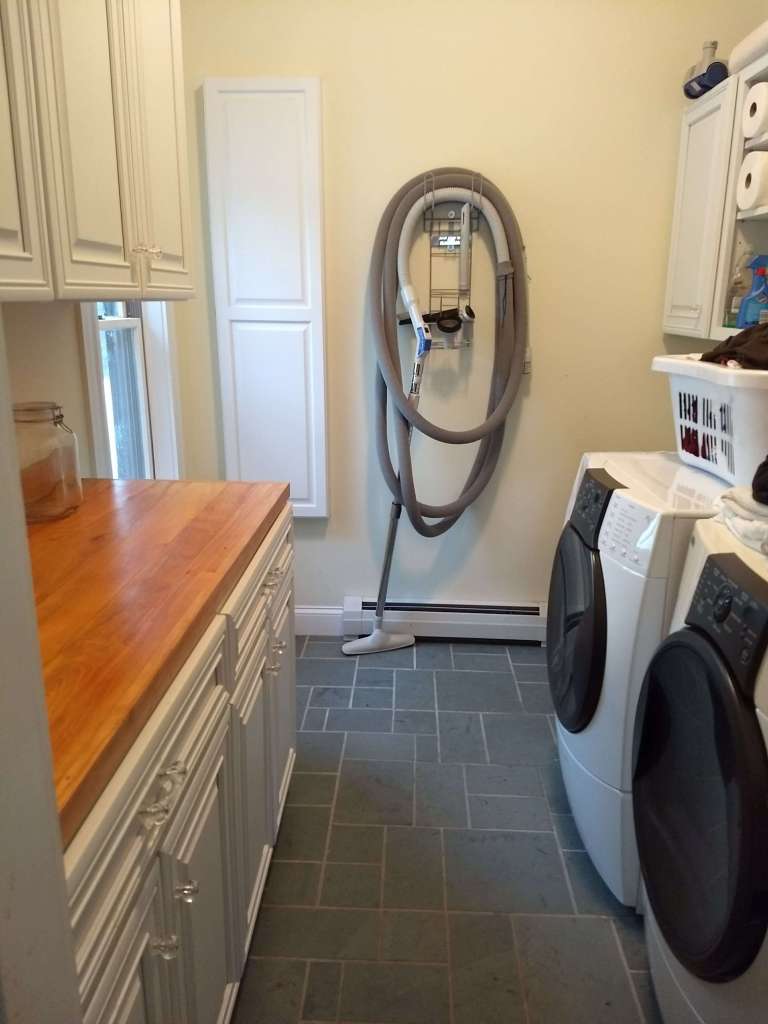
More from Materialsix.com:


